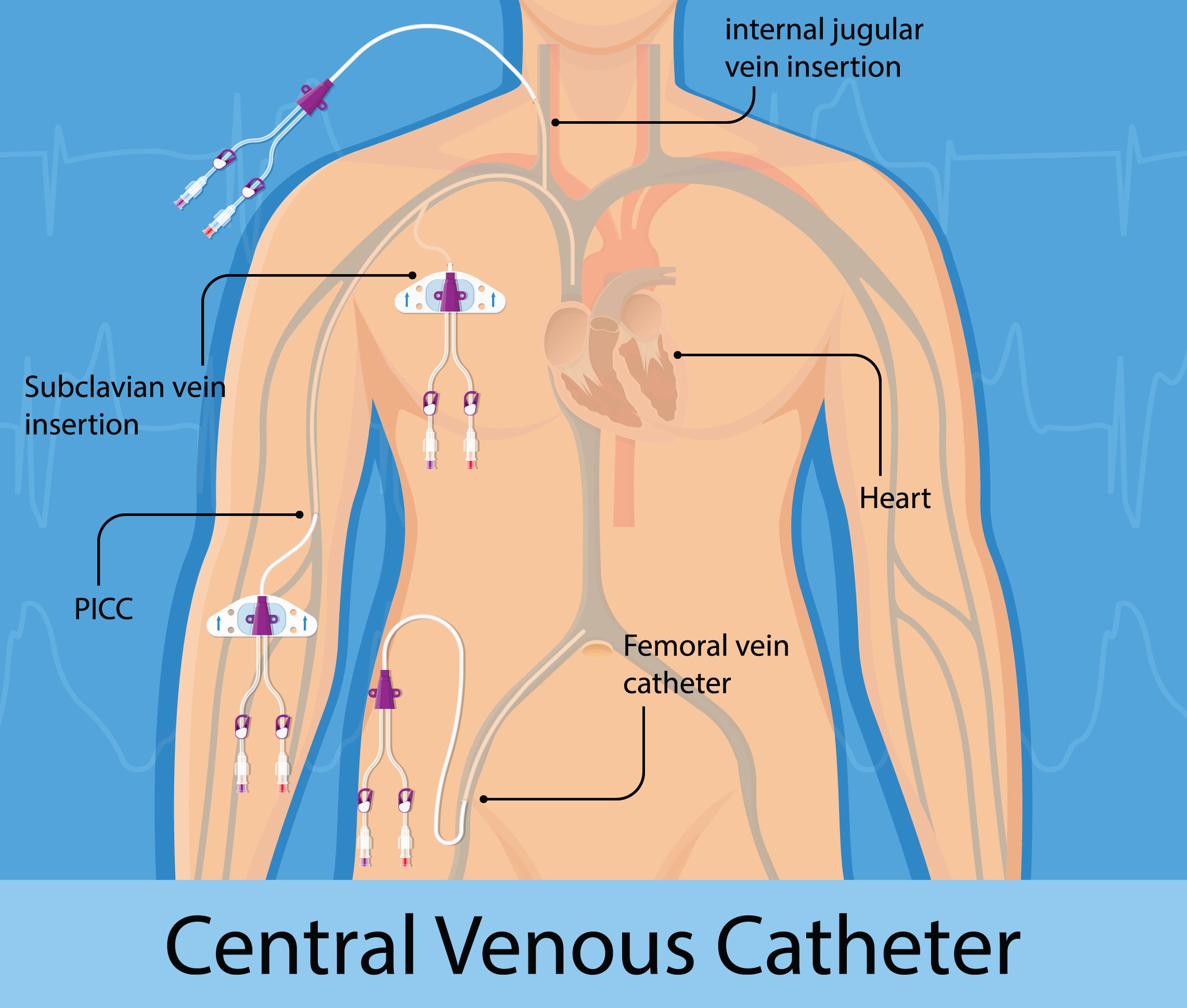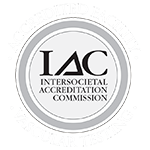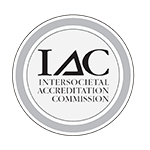
While treating you for certain medical conditions, your physician may choose to supply you with a central venous catheter (CVC). It is also referred to as a central line. It boasts the ability to smoothly deliver medication, nutrients, blood, and fluids and allows for quick sampling of blood to perform various medical tests.
How Does It Work?
Despite an intimidating name, a central venous catheter is simply a flexible, thin tube that is inserted into a large vein somewhere on the arm, chest, or groin. It is expertly threaded (guided) through the vein until it reaches the superior vena cava, a large vein above the right side of the heart.
Unlike a standard intravenous line (IV) that supplies medication and fluids to a vein below the skin's surface, a CVC can remain in place for a longer period, perhaps weeks or months. Thankfully, a central line will prevent wear on your vein by removing the need for multiple needle sticks normally required for injections or blood sampling.
Are There Different Types?
There are multiple kinds of CVCs, and your physician will decide which type is best for your particular condition.
PICC Line (Peripherally Inserted Central Catheter)
One end of this catheter type is inserted into a vein of the arm and then threaded to the superior vena cava that drains into the heart. The other end will remain outside of the arm above the elbow, and it may have one or two small tubes known as lumens – locations for medication administration or blood sampling.
Implanted Tunneled Port
Also known as simply a "port", this type of CVC also reaches the superior vena cava, but the entire line remains under the skin. The catheter is connected to a port or a plastic disc, which can be felt superficially under the skin, and your physician will administer treatment by inserting a needle through the skin and into the disc.
Ports do require minor, short surgery but they stand out in their ability to allow more freedom in daily activities than a PICC line.
Tunneled CVC
This kind of line requires your physician to make two small incisions, place the catheter into the vein, and guide one end toward the heart. The opposite end is placed within the tunnel superficially underneath the skin between both incisions and will terminate with one or more lumens.
What Conditions Might Require a Central Venous Catheter?
Many medical issues may benefit from this type of catheter, including:
- Kidney dialysis several times a week
- Chemotherapy cancer treatment
- Long-term antibiotic treatment
- Bowel problems requiring supplemental nutrition
- Need for frequent blood tests
- Requirement for self-treatment at home
Can Complications Arise?
As with any procedure, the placement of a central line does carry some risk of complications. Examples include:
Mechanical
- Arterial puncture
- Hematoma (blood collecting outside a vessel)
- Pneumothorax (collapsed lung)
Infectious
Infections may develop due to pathogens collecting near locations such as:
- Exit site
- External catheter surface
- Catheter hub
- Internal catheter surface
Thrombotic
Placement of a CVC may result in catheter-related thrombosis, in which a blood clot has formed within the vein.
What Can Be Done to Avoid Catheter-Related Infections?
Central line-associated bloodstream infection (CLABSI) is a serious condition resulting from microbes finding their way into the bloodstream via the catheter.
You can help ensure healthcare workers are careful to take precautions that include:
- Thorough hand hygiene
- Sterile barrier precautions at insertion
- Choosing a subclavian (below the collarbone) venous insertion site whenever possible
- Disinfecting skin with a 2% chlorhexidine alcoholic preparation
- Use of dressings saturated with chlorhexidine
- Quick replacement of detached or moistened dressings
You can help prevent infection yourself by attempting to:
- Discover the hospital's CLABSI rate
- Speak up to remind healthcare staff to follow effective infection prevention practices
- Alert a staff member if a bandage comes loose or the surrounding area becomes damp or dirty
- Keep the central line and insertion area dry
- Notify a healthcare worker if the CVC's surrounding area becomes sore or red
- Let a staff member know if you develop a fever or chills
- Prevent yourself and visitors from touching the catheter or its tubing
When properly maintained, a central venous catheter can be an effective short-term tool for you and healthcare workers as you undergo treatment for certain medical conditions.
Contact us today to learn more.








